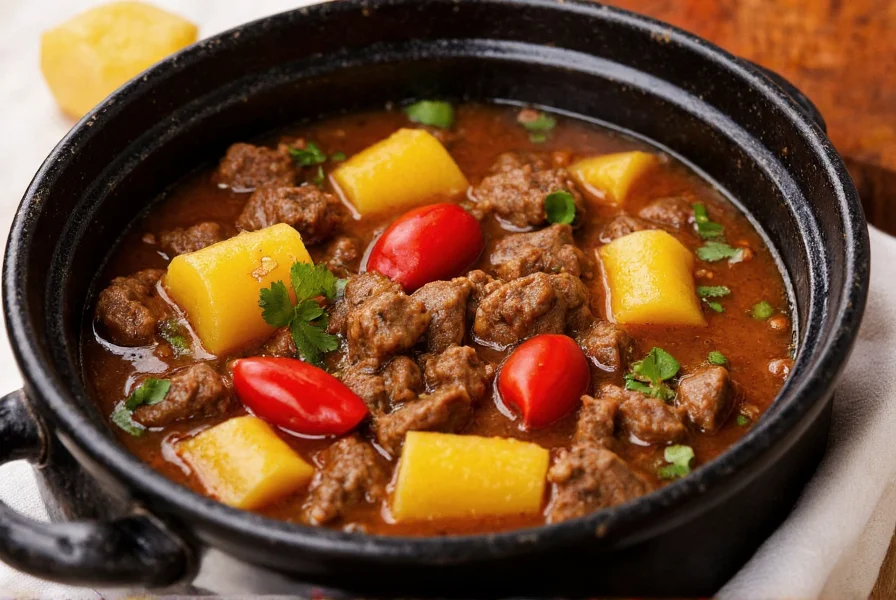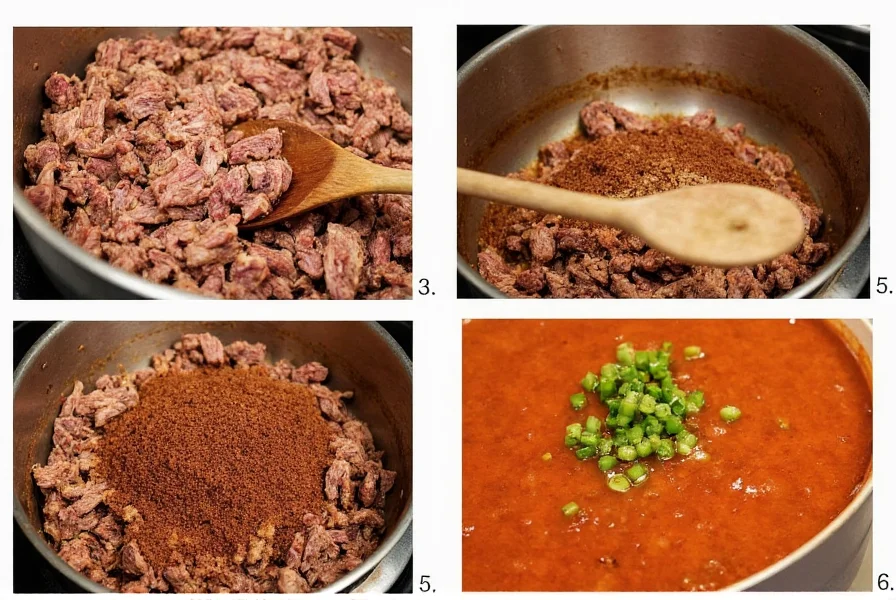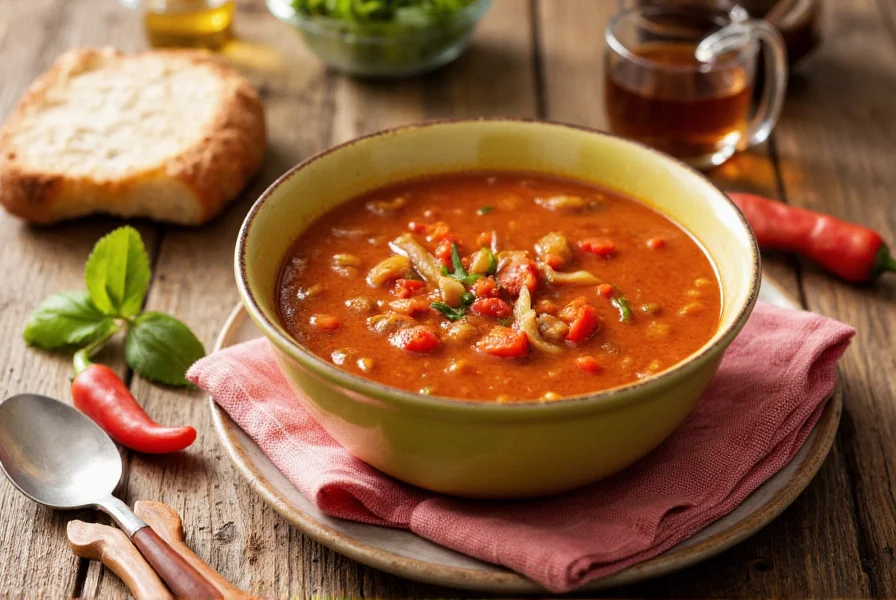Pepper pot soup represents one of the Caribbean's most culturally significant dishes, with origins tracing back to indigenous Arawak and Carib cooking traditions. This hearty stew evolved through centuries of cultural exchange, incorporating African, East Indian, and European culinary influences to become a centerpiece at celebrations across Trinidad and Tobago. Unlike ordinary soups, authentic pepper pot soup delivers a complex flavor profile balancing intense heat with subtle sweetness and warming spices.

Historical Roots and Cultural Significance
The origins of pepper pot soup extend to pre-colonial Caribbean, where indigenous peoples created early versions using cassava and wild game. Enslaved Africans later contributed their culinary expertise, while indentured East Indian laborers introduced additional spices that enriched the flavor profile. This dish became particularly significant during Christmas celebrations, with many Trinidadian families maintaining a "forever pot" that's continuously replenished throughout the holiday season.
Pepper pot soup's remarkable preservation qualities made it historically valuable in tropical climates without refrigeration. The high concentration of Scotch bonnet peppers creates an environment inhospitable to bacteria, allowing properly prepared soup to remain safe for consumption for weeks. This characteristic made it practical for plantation workers who needed sustenance that wouldn't spoil in the Caribbean heat.
Regional Variations Across the Caribbean
| Region | Key Ingredients | Distinguishing Features |
|---|---|---|
| Trinidad & Tobago | Beef, pork, goat, cassava, cinnamon, cloves | Dark color from burnt sugar, complex spice blend, multiple meats |
| Guyana | Wild game, cassareep (cassava extract) | Thinner consistency, cassareep-based, often includes lappe (agouti) |
| Jamaica | Goat, callaloo, breadfruit | Greener appearance, less sweet profile, callaloo greens |
| United States (Philadelphia) | Beef tripe, hominy, hot peppers | Distinct from Caribbean version, Native American origins |
Authentic Trinidadian Pepper Pot Soup Recipe
Creating traditional pepper pot soup requires attention to detail and proper technique. This authentic recipe yields 8 servings with preparation time of approximately 3 hours, though the soup's flavor improves when allowed to rest overnight before serving.
Essential Ingredients for Traditional Preparation
- 2 lbs mixed meats (beef chuck, pork shoulder, goat)
- 1 lb cassava (yuca), peeled and cut into chunks
- 4-6 Scotch bonnet peppers (adjust to taste)
- 2 large onions, finely chopped
- 4 cloves garlic, minced
- 2 tbsp ginger, grated
- 2 cinnamon sticks
- 8 whole cloves
- 1 cup burnt sugar (prepared separately)
- 4 sprigs fresh thyme
- Salt to taste
Perfect Burnt Sugar Technique
The distinctive dark color and caramel notes of authentic pepper pot soup come from properly prepared burnt sugar. To create: melt 1 cup granulated sugar in a heavy-bottomed pot over medium heat, stirring constantly until it reaches a deep amber color. Immediately remove from heat and carefully add 1 cup hot water (mixture will bubble vigorously). Stir until fully dissolved and set aside to cool. This technique for burnt sugar preparation prevents bitterness while adding essential flavor complexity.
Step-by-Step Cooking Instructions
- Brown each meat type separately in a large pot, removing when browned
- Sauté onions, garlic, and ginger until translucent
- Return all meats to the pot with 6 cups of water
- Add thyme, cinnamon, and cloves; bring to boil then reduce to simmer
- Cover and simmer for 1.5-2 hours until meats are tender
- Add cassava and burnt sugar; continue simmering for 30 minutes
- Add Scotch bonnet peppers (whole for milder heat, chopped for intense)
- Simmer uncovered for another 20 minutes to allow flavors to meld
- Season with salt and adjust spices as needed

Serving Traditions and Storage Methods
Pepper pot soup reaches its peak flavor when served the day after preparation, as the complex spices continue to meld overnight. Traditionally served with hard dough bread or cassava bread, it also complements rice or fungi (a cornmeal and okra side dish). For authentic presentation, serve in black clay pots which help maintain temperature and enhance flavor.
One of pepper pot soup's most distinctive characteristics is its exceptional shelf life. When stored properly in the refrigerator, it remains safe to eat for up to three weeks. Many Caribbean families follow the "forever pot" tradition—adding new ingredients while consuming portions—creating a continuous batch that can last for months. The high concentration of hot peppers creates natural preservation through capsaicin's antimicrobial properties.
Common Preparation Mistakes to Avoid
Even experienced cooks encounter challenges when preparing authentic pepper pot soup. These common errors can compromise the final dish:
- Insufficient meat browning: Properly searing each meat type separately creates essential flavor layers that define authentic pepper pot soup.
- Incorrect pepper handling: Removing all pepper seeds reduces heat but also diminishes authentic flavor; consider leaving some seeds intact for complexity.
- Rushed burnt sugar: Burnt sugar requires careful attention; burning it creates bitter flavors that ruin the entire batch.
- Overcooked cassava: Adding cassava too early results in disintegration; it should maintain some texture when served.
- Skipping the resting period: Pepper pot soup's flavors deepen significantly when allowed to rest overnight before serving.
Frequently Asked Questions
What gives pepper pot soup its distinctive dark color?
The dark color primarily comes from properly prepared burnt sugar, created by caramelizing granulated sugar until it reaches a deep amber color. This technique adds complex caramel notes that balance the intense heat of the peppers. Some regional variations also use cassareep (a thick, dark sauce made from cassava root) which contributes to the color while adding distinctive flavor.
How spicy should authentic pepper pot soup be?
Authentic pepper pot soup has significant heat from Scotch bonnet peppers, but it's not meant to be overwhelmingly spicy. The heat should balance with the sweetness of burnt sugar and richness of meats. Traditional preparation often involves adding whole peppers rather than chopped, allowing diners to control their heat level. The soup should have a warming, complex heat rather than an overpowering burn, making it enjoyable for most palates when properly prepared.
Can I make pepper pot soup without meat for a vegetarian version?
While traditional pepper pot soup always includes multiple meats, you can create a vegetarian adaptation by substituting with hearty vegetables like eggplant, mushrooms, and additional root vegetables. Replace meat broth with rich vegetable stock and consider adding smoked paprika to mimic meat depth. Note that this would significantly differ from the authentic dish, which derives much of its character from the combination of different meats simmered together.
Why does pepper pot soup last so long without refrigeration?
Pepper pot soup's exceptional shelf life comes from its high concentration of hot peppers, particularly Scotch bonnets, which contain capsaicin—a natural antimicrobial compound. The acidity from peppers and sugar content from burnt sugar create an environment that inhibits bacterial growth. Traditional preparation methods often involve maintaining a "forever pot" that's continuously replenished, with the high pepper content preserving the entire batch for weeks or even months when properly cared for.
What's the difference between Trinidadian and Guyanese pepper pot soup?
Trinidadian pepper pot features a dark color from burnt sugar and typically includes multiple meats (beef, pork, goat) with a complex spice profile including cinnamon and cloves. Guyanese pepper pot, sometimes called "cassareep," uses cassareep (a thick, dark sauce made from cassava root) as its base and often includes wild game meats like lappe (agouti). The Guyanese version has a thinner consistency and relies more heavily on cassareep's unique flavor, while the Trinidadian version emphasizes the blend of meats and spices.











 浙公网安备
33010002000092号
浙公网安备
33010002000092号 浙B2-20120091-4
浙B2-20120091-4